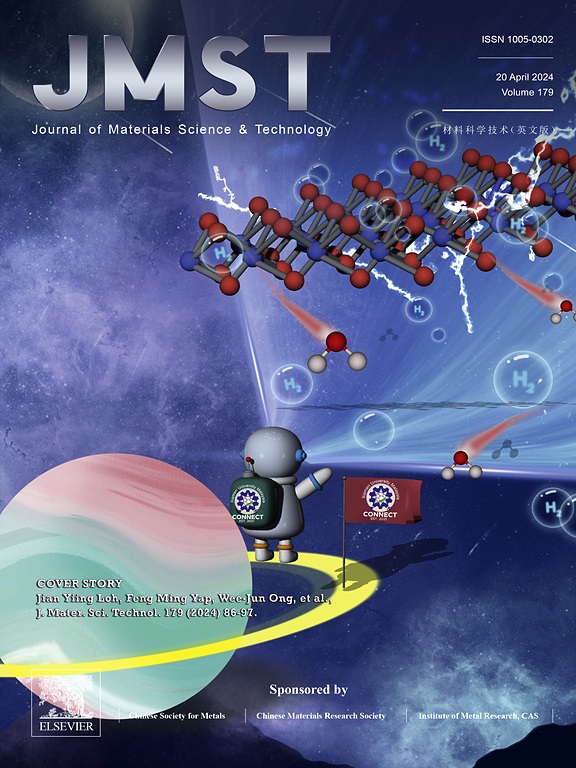Multiscale phase-field simulation framework for spinodal decomposition behavior in composite carbide ceramics
IF 14.3
1区 材料科学
Q1 MATERIALS SCIENCE, MULTIDISCIPLINARY
引用次数: 0
Abstract
In traditional carbide ceramics, the inherent trade-off between hardness and toughness limits performance under extreme conditions. Spinodal decomposition enables the formation of nanoscale lamellar structures that simultaneously enhance both properties, yet precise control over microstructural evolution during aging remains challenging. This study develops a multiscale phase‐field simulation framework to clarify the formation mechanisms and mechanical contributions of lamellar structures in (Ti, Hf)C ceramics. Systematic experiments evaluated the effects of aging time and temperature on microstructure and properties. Initially, the phase‐field crystal method was applied to identify grain boundary defects, yielding critical insights. Subsequently, phase‐field simulations based on experimental data and key parameters investigated spinodal decomposition with an emphasis on its synergistic impact on crack propagation. Ultimately, (Ti0.5, Hf0.5)C achieved optimal performance after 10 h of aging at 1500°C, with a hardness of 2745 HV and a fracture toughness of 3.21 MPa m1/2.

复合碳化物陶瓷spinodal分解行为的多尺度相场模拟框架
在传统的碳化物陶瓷中,硬度和韧性之间的内在权衡限制了极端条件下的性能。Spinodal分解使纳米级层状结构的形成同时增强了这两种性能,但在老化过程中精确控制微观结构的演变仍然是一个挑战。本研究开发了一个多尺度相场模拟框架,以阐明(Ti, Hf)C陶瓷中片层结构的形成机制和力学贡献。系统实验评价了时效时间和温度对合金组织和性能的影响。最初,相场晶体方法被应用于识别晶界缺陷,产生了重要的见解。随后,基于实验数据和关键参数的相场模拟研究了旋量分解,重点研究了其对裂纹扩展的协同影响。最终,(Ti0.5, Hf0.5)C在1500℃时效10 h后达到最佳性能,硬度为2745 HV,断裂韧性为3.21 MPa m1/2。
本文章由计算机程序翻译,如有差异,请以英文原文为准。
求助全文
约1分钟内获得全文
求助全文
来源期刊

Journal of Materials Science & Technology
工程技术-材料科学:综合
CiteScore
20.00
自引率
11.00%
发文量
995
审稿时长
13 days
期刊介绍:
Journal of Materials Science & Technology strives to promote global collaboration in the field of materials science and technology. It primarily publishes original research papers, invited review articles, letters, research notes, and summaries of scientific achievements. The journal covers a wide range of materials science and technology topics, including metallic materials, inorganic nonmetallic materials, and composite materials.
 求助内容:
求助内容: 应助结果提醒方式:
应助结果提醒方式:


